I have only recently discovered the world of food blogging, thanks to my friend Rachel. Although I don’t see myself setting up a blog just for food (there are too many other things to write about too), food is one of my main obsessions and the subjects of many entries on my blog. So when I saw the theme of the
11th IMBB, I decided to enter.
Mame Daifuku (pronounced mah-meh dye-fuku), which directly translates into “Beans of Big Fortune,” is one of my favorite Japanese desserts. If you’ve never had a mame daifuku, it is like a rice dumpling. The dough is made of sticky rice flour, with cooked peas mixed in (trust me, this is not weird). There are some variations on the stuffing but the most common type is red bean paste.
In winter, when strawberries are in season you will also find daifukus with a strawberry nestled in the red bean stuffing. In this case it’s called an ichigo daifuku (strawberry daifuku).
I love mame daifuku for many reasons, one of which is because unlike most Japanese sweets, whose original purpose was to counter some of the bitter taste of macha (Japanese powdered green tea), they are not obscenely sweet. Here you have a filling that is sweet, but it’s perfectly countered by the sticky rice dough that only has the slightest hint of sweetness. Enjoy it with a cup of Japanese green tea (sencha) to experience the flawless harmony of flavors.

The best thing about the mame daifuku however, is its texture. The sticky rice flour used to make mame daifuku is called shiratamako (direct translation: white jade powder). Unlike regular sticky rice powder, which is ground into a fine powder mechanically, shiratamako is made by soaking the grains of sticky rice in water until soft. The soft rice is mashed, and then freeze dried. The end product looks a bit like broken up pieces of chalk, but the very nature of the freeze-drying process makes the particle size extremely fine (you people who’ve taken Pharmaceuticals 101 should know this). When cooked, this turns into texture so smooth when cooked it practically melts in your mouth. The freeze drying process also makes the dough extremely sticky and stretchy, so it is always fun to bite into a daifuku and see how long you can make the skin stretch before it breaks. It doesn’t make good table manners, but sure is a fun way to eat a daifuku. Try it, you’ll like it too.
Where was I? Right, back on the subject of texture. In Asian cultures, whenever you have “yin” it is always balanced out with “yang,” and mame daifuku is no exception. If the softness of the dough is “yin,” the firm peas imbedded in the dough is “yang.” Imagine sinking your teeth into the supple dough of sticky rice, you bite deeper, and hit the smooth bean paste. Mmmm. You take a bite and chew. Instantly a burst of sweet flavor explodes in your mouth. Then imagine chewing into a pea. What a pleasant surprise! The pea is cooked el dente; tender, yet firm compared to the dough and bean paste, providing a welcome contrast of texture. When I eat my mame daifuku, I always try to look at where the peas are hiding inside the dough and take my bites carefully so I have at least one pea per bite. Now, if you are going to put a strawberry inside the daifuku, it is recommended that you omit the peas. Texture is good, but we all know too much of a good thing can sometimes be bad.
Oh, one last thing, I forgot to mention a critical ingredient: the potato starch (but cornstarch will do also), which coats the daifuku, mame (bean) or strawberry. Because the rice dough is so sticky, without the potato starch coating, it’d be a mess to eat. Think of it as the Japanese version of “melts in your mouth, not in your hands”
Enough ranting. Here’s the
original recipe in Japanese, and my translation/modification:
Ingredients:
Sticky rice powder (shiratamako if you can find it) – 50g (scant 1/2C of the shiratamako, but less in volume if you use regular rice powder)
Water – 100ml
Sugar – 70g (scant 1/3 cup)
Cooked peas – 50g (about 1/4 cup) *
Potato starch (or cornstarch) – a generous amount
Red bean paste – 6 to 12 tablespoons
*I couldn’t find dried peas so used kidney beans instead. Any beans will do, but they should be at least the size of a pea. Just be careful not to boil the beans too long, as they should maintain their shape when mixed into the dough.

shiratamako
1. Place rice powder in a microwaveable large bowl, and stir in water until all the powder is wet. Microwave at 500W for 2 minutes without plastic wrap.

2. Stir well, add half of the sugar, and knead the dough really well with a spatula (a stiff silicone one is recommended as anything else will stick hopelessly to the dough).
3. Heat in the microwave at 500W for another 2 minutes, without plastic wrap.
4. Add the remaining half of the sugar and peas (or kidney beans in my case), stir. You’ll need to put some muscle into it as the dough is becoming more elastic at this point. For best result, try to make sure the beans are evenly distributed in the dough.

5. Place the bowl in microwave and microwave at 500W without plastic wrap until the dough stops expanding, approximately a minute and a half.
6. Scrape the dough out of the bowl onto a working surface covered with potato starch. (There is really no such thing as too much starch, since only the needed amount will stick to the dough and the rest will fall off) Sprinkle the top of the dough with starch so it’s completely covered with it, and divide into six equal parts. Make sure you powder the cut surface as well.
There is no need to shape the dough into rounds because they are so elastic you can do whatever you want with it and it won’t break. It is preferable to work while the dough is still warm, because then you could eat warm mame daifuku. Believe me, once you’ve had a warm one, you’ll never want to eat the store-bought cold version. Plus, if you don’t work quickly, the dough will dry out, which is another reason why the starch is so important, as it delays the drying.
7. Place one to two tablespoonfuls of red bean paste onto a piece of flattened dough, and gather the edge of the dough on top, as you would when making a dumpling.
The amount of red bean paste you put in entirely depends on your taste. If you like things sweet, put in 2 tablespoon, if you are like me, then one tablespoon will suffice, and if you decide to put a strawberry in, use one tablespoon of bean paste. 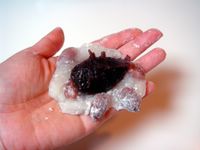
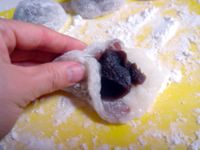
8. Turn it over so the sealed side is down and shape.

Voila! Mame Daifuku!
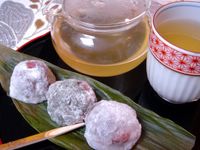
From left: strawberry daifuku; yomogi daifuku (dough contains a green ingredient extracted from plants); mame daifuku
* Store in a tight container at room temperature for up to two days.

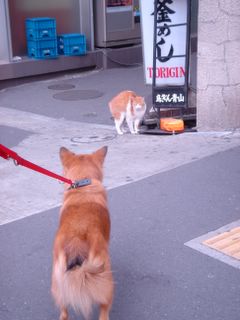

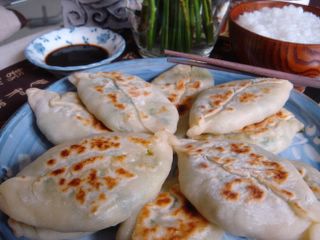
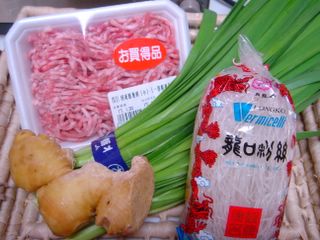


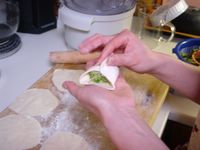



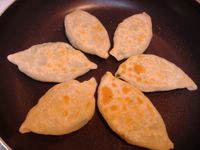














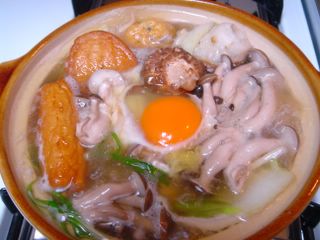



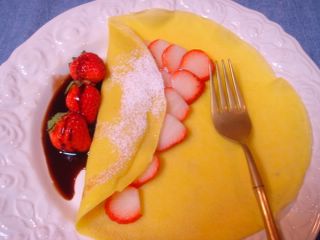




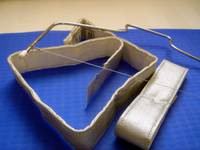
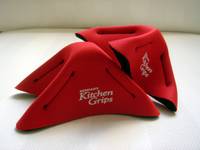
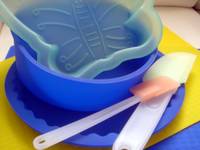
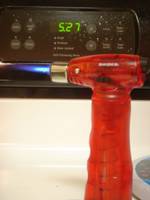








 Stumble It!
Stumble It!